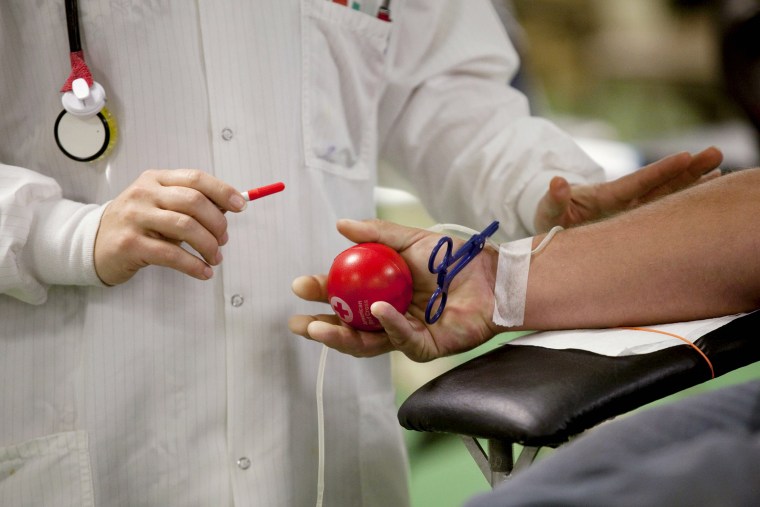The Food and Drug Administration (FDA) formally lifted its longstanding ban on blood donations from men who have sex with other men (MSM) on Monday, releasing guidance instead requiring the MSM population to remain celibate for a year before donating blood.
Although the change overturns one of the last remaining federal bans on LGBT Americans, critics of the policy are still unhappy with the 12-month deferral for gay and bisexual men. The new regulation, they argue, amounts to medically unnecessary discrimination based on sexual orientation.
“This new policy prevents men from donating life-saving blood based solely on their sexual orientation rather than actual risk to the blood supply," said David Stacy, government affairs director for the Human Rights Campaign, in a statement. "While it's a step in the right direction toward an ideal policy that reflects the best scientific research, it still falls far short of a fully acceptable solution because it continues to stigmatize gay and bisexual men. It simply cannot be justified in light of current scientific research and updated blood screening technology.”
Kelsey Louie -- CEO of the GMHC, an HIV/AIDS prevention and advocacy group -- offered a similar rebuke.
“Heterosexuals are given no such restrictions, even if their sexual behavior places them at high risk for HIV,” said Louie in a statement on the 12-month deferral. “In practice, the new policy is still a continuation of the lifetime ban and ignores the modern science of HIV-testing technology while perpetuating the stereotype that all gay and bisexual men are inherently dangerous. Blood donation policies should be based on science, not stigma.”
Democratic presidential candidate Martin O’Malley also weighed in with his disapproval on Twitter:
Monday’s guidance follows the FDA’s formal proposal in May to replace its lifetime ban on blood donations from the MSM population with a 12-month deferral. The policy change was championed by numerous medical organizations -- including the American Medical Association, American Red Cross, America’s Blood Centers, American Association of Blood Banks and the American Plasma Users Coalition -- based on scientific advancements that allow for blood banks to detect HIV in a donor sample soon after infection.
Under the old policy, any man who’d had sex with another man -- even once -- since 1977 was barred from donating blood for life. At the time of its implementation, the lifetime ban made sense. It was 1983, after all -- the height of the AIDS epidemic -- when little was known about the disease other than the fact that it was decimating large swaths of the gay population.
The last 30 years, however, brought significant advancements in HIV detection and prevention, making even a 12-month deferral policy overly cautious, many argue. Blood banks in the U.S. currently screen every donor sample using a process known as Nucleic Acid Testing (NAT), which can pick up HIV in a unit of blood as soon as nine days after the donor was infected. Requiring gay and bisexual men to remain celibate for a year before donating, therefore, is arguably 50 weeks longer than necessary.
RELATED: FDA to bar teens, children from indoor tanning
The FDA justified its new policy by pointing to the higher rate of HIV infection experienced nationally among the MSM population.
“As a group, in the United States, MSM have the highest HIV risk: according to CDC, two-thirds of new HIV infections occur in the approximately 2% of the population who are MSM,” states the new guidance. “The risk of HIV among MSM is more than twenty-fold higher than that of men who have sex with multiple female partners and women who have sex with multiple male partners. Thus, absent another scientifically-validated way of identifying individuals at highest risk of transmitting HIV, a time-based deferral for MSM since last sexual encounter is the one deferral policy that has been demonstrated to be effective in a setting with similar HIV epidemiology to the United States.”
